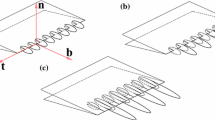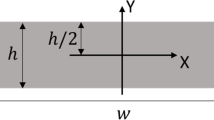Abstract
Classical dynamic fracture theories predict the Rayleigh surface wave speed (c R ) to be the limiting speed of propagation for mode-I cracks in constitutively homogeneous, isotropic, linear elastic materials subjected to remote loading. For mode-II cracks, propagating along prescribed straight line paths, the same theories, while excluding the possibility of crack growth in the speed regime between c R and the shear wave speed, c s , do not exclude intersonic (c s <υ<c l ) crack tip speeds. In the present study, we provide the first experimental evidence of intersonic crack growth in such constitutively homogeneous and isotropic solids, ever recorded in a laboratory setting. Intersonic shear dominated crack growth, featuring shear shock waves, was observed along weak planes in a brittle polyester resin under far-field asymmetric loading. The shear cracks initially propagate at speeds just above c s and subsequently accelerate rapidly to the longitudinal wave speed (c l ) of the solid. At longer times, when steady state conditions are attained, they propagate at speeds slightly higher than √2–c s . The experimental results compare well with existing asymptotic theories of intersonic crack growth, and the significance of the preferred speed of √2–c s is discussed.
Similar content being viewed by others
Author information
Authors and Affiliations
Additional information
Received: 13 September 1999 / Reviewed and occerted: 19 November 1999
Rights and permissions
About this article
Cite this article
Rosakis, A., Samudrala, O. & Coker, D. Intersonic shear crack growth along weak planes. Mat Res Innovat 3, 236–243 (2000). https://doi.org/10.1007/s100190050009
Issue Date:
DOI: https://doi.org/10.1007/s100190050009




